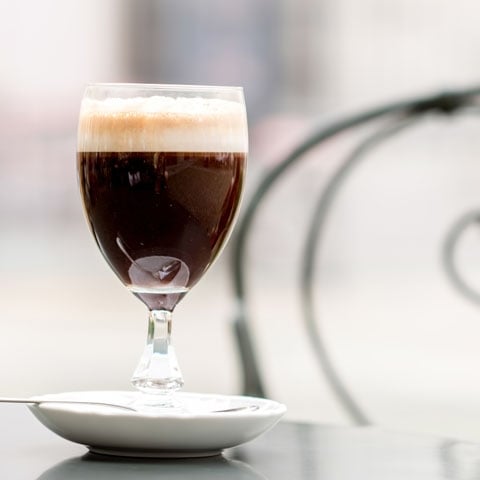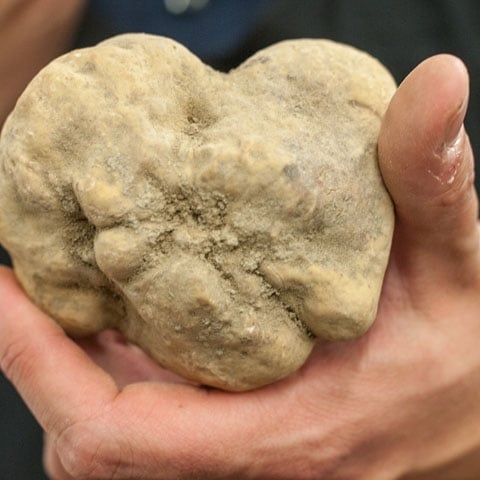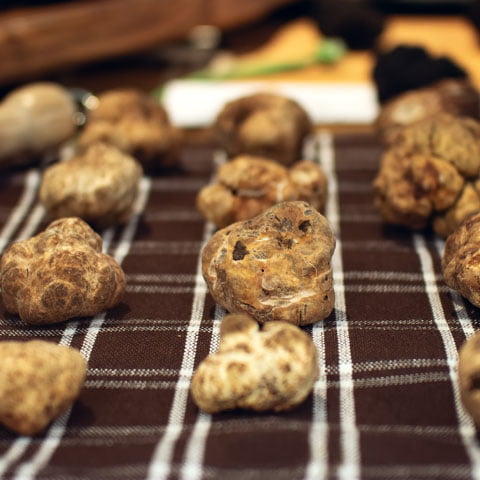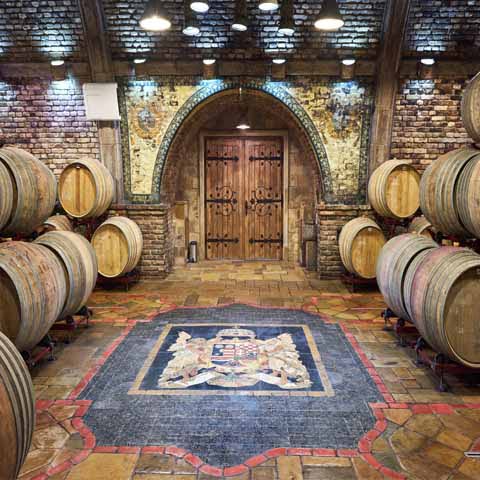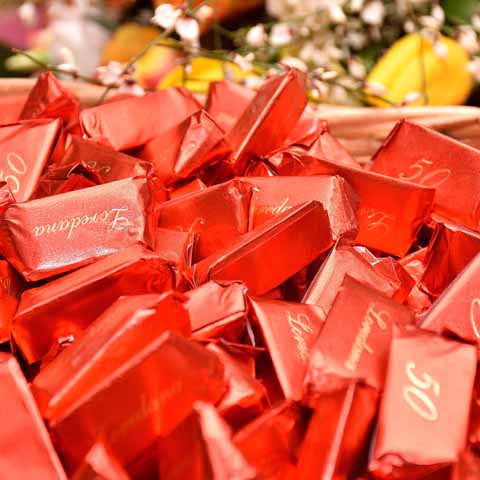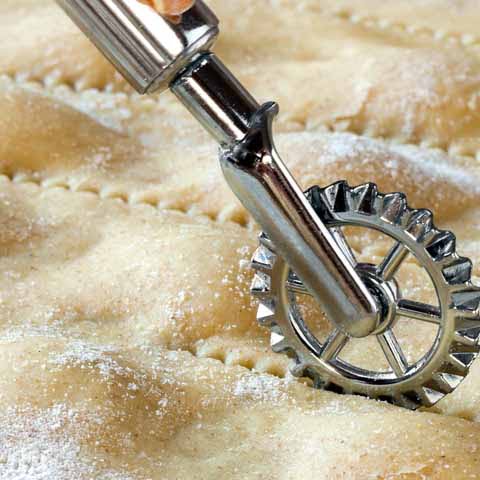The cuisine of Piedmont can best be described as rich and deeply flavorful, two qualities that can also be found in the region’s famed wines. Possibly the best wine producing region in all of Italy, Piedmont is a region filled with rich, fertile lands which produce stunning wines such as the famed Barolo, Barbaresco, and Barbera varieties.
In addition, the region’s landscape, which includes many spanning beech and chestnut forests, helps the local cuisine to be highly influenced by the area’s abundant fungi—including a wide variety of mushrooms and the extremely rare white truffle. Alba, the capital of gourmet food in Piedmont, along with a few other areas in the region, are a handful of the locations in the world in which the white truffle can be found. The white truffle’s origin and availability throughout Piedmont, paired with its versatility and ability to enhance other flavors, makes the delicacy a key ingredient throughout the region’s cuisine.
Typically, a meal in Piedmont will be comprised of a variety of antipasti—appetizers consisting of savory foods like meats, cheeses, and the famous Piedmont grissini—as well as primi,secondi, and dolcecourses that are derived from the local culture and history. Throughout the meal, shades of various cultures, from French to Ligurian, will influence the flavor profiles and recipes, depending on where one is located within the region.
The food in Piedmont is filled with traditional flavors–Barolo wine, white truffles, hearty meats—and the meal is characterized by a deep appreciation and love of food. This passion for culinary culture comes as no surprise since Piedmont is the birthplace of the Slow Food Movement.
APPETIZERS
Piedmont is known throughout Italy for their ample and filling appetizers, or antipasti. Consisting mainly of meaty, savory dishes, the appetizer course in this region will typically serve three to five antipasti, which alone could be considered a full meal.
The most famous of Piedmont’s antipastiare the world-famous grissini(breadsticks). These hand-stretched breadsticks are unusually large, measuring up to half a meter, and have a crispy texture. They make for excellent conversation pieces and pair well with other traditional appetizers such as cured meat plates.
A typical appetizer in Piedmont will have different kinds of meats than one will find throughout the rest of Italy. Expect to find prosciutto, bresaola, and salamino al Barolo, a unique salami which is made with the region’s Barolo wine and preserved in luscious olive oil.
Along with a variety of cured meats, diners in Piedmont will experience traditional appetizers such as tomino al tartufo. Tomino cheese, made from cow’s milk, is preserved in olive oil along with local black or white truffles, to create this traditional start to lunches in Piedmont.
For a truly unique appetizer experience, order the carne all’albese, a dish made of thinly sliced or minced raw meat, garnished with olive oil, lemon juice, garlic, salt, pepper, and a dash of white truffle. The dish is made of a special breed of cattle called Fassone, which are known for their high quality, low fat content meat.
FIRST COURSE
For the primocourse in Piedmont, the star is usually pasta. Common pasta varieties are tajarin, agnolotti, tagliatelle, and rice. These various types of pasta are either served on their own, simply dressed with butter and sage, or tossed with a variety of meat sauces. Local cheeses are commonly used to garnish the plates as well.
The most traditional pasta type in Piedmont is tajarin. This ribbon-like egg pasta is long and thin, similar to tagliatelle. The pasta takes on a dark yellow to orange coloring thanks to the abundance of egg yolks that are used to make it. Another unique pasta favored throughout Piedmont is agnolotti, which is similar to a miniature ravioli and typically stuffed with roasted meats or earthy vegetables. Typically served with meat sauces or the traditional butter and sage sauce that is popular throughout Piedmont, any of these pasta types are ideal partners for shaved truffles, mushrooms, and Barolo wine, which all appear frequently throughout the region’s pasta dishes.
Not a far stretch from the pasta family, dishes like risotto, potato gnocchi, and soups with rice all are common dishes to serve in the first course of a typical Piedmont meal.
SECOND COURSE
The stars of the secondocourse throughout the Piedmont region are typically local meats and seasonal vegetables. The king of this course is a dish called Brasato al Barolo, a traditional stew of veal or local Fassone cattle meat that has been marinated overnight in the region’s famed Barolo wine. The meat is then braised with local vegetables until it is fork tender. Other stews such as gran bollito misto piemonteseare also common.
Throughout the second course in Piedmont, expect to see meats such as veal, lamb, and beef, as well as poultry and game such as rabbit. The second course helps prove why Piedmont’s cuisine is hailed as such a hearty one, with meat serving as a primary feature and full-bodied wines, rich truffles, and earthy mushrooms helping to round out the flavors of each dish.
SIDES
Alongside the primo andsecondocourses in this region, diners can expect decadent sides to accompany the entrees. A traditional dish, bagna cauda, meaning “hot bath” is a twist on a fondue dip, consisting of olive oil, anchovies, white truffles, and garlic. Traditionally, the dish was served as a dip for local grape pickers during harvest season and winter time in which they would dip a variety of steamed or boiled Autumnal vegetables.
In addition, cheeses are a staple side item, given the large cheese culture that is so prevalent throughout Piedmont. The three main cheeses that stand out among the local varieties are gorgonzola, a veined blue cheese, toma, a soft cheese that pairs well with truffles, and murazzano, a sheep’s milk cheese.
DESSERTS
Due to French influence, pastries and desserts are a major part of Piedmont’s food culture. Diners can expect the dolcecourse to be filled with Roero strawberries and hazelnuts, which are so abundant in the area that the region is the birthplace of Nutella!
Typical desserts throughout the region are krumiri, a unique sweet biscuit, baci di dama, hazelnut sandwich cookies, and gianduiotto, hazelnut chocolate. One of the most popular dessert items in the area is torta di nocciola, a hazelnut cake made with roasted nuts. The recipe for this cake is traditionally passed down from grandmothers within families.
Alongside any of these sweet creations may come a glass of bicerin, a beverage served in a round glass that is a layering of espresso, chocolate, and whole milk.
STREET FOODS
As with any region in Italy, street foods are a quick and easy way to experience the local food culture. At street carts and small restaurants, one may find miasse, which are thin and crunchy rectangular crackers that are made of maize flour and cooked on special plates. Perfect finger foods, they are sometimes covered in sugar or served alongside local cheese. Another delicious street food to enjoy are gofri. These waffle-like creations can be savory and served with cured meats like salami or they can be sweet, often covered with chocolate or the popular Piedmont export, Nutella.
WINE
The climate and geography of Piedmont makes it an ideal location to create exquisite wines. Being one of Italy’s most famed and appreciated wine production areas, wine is an integral part of the culture and is valued not only as a drink to accompany food, but also as a key ingredient in many, if not most, of the region’s most traditional recipes.
The two key wines used throughout the region are the remarkable Barolo and Barbera wines. Barolo is a tannin-heavy, full-bodied wine with notable acidity. Barbera wine is simultaneously rich yet light. Both are favorites in a variety of recipes, and of course, in a glass for delightful sipping.
Sweet wines are also popular throughout the region. Piedmont is the birthplace of the famed Moscato wine, which is easy to drink and very fruity, and the Asti Spumante, a sparkling wine that has been called the “champagne of Italy.”
Vacations To Piedmont –

